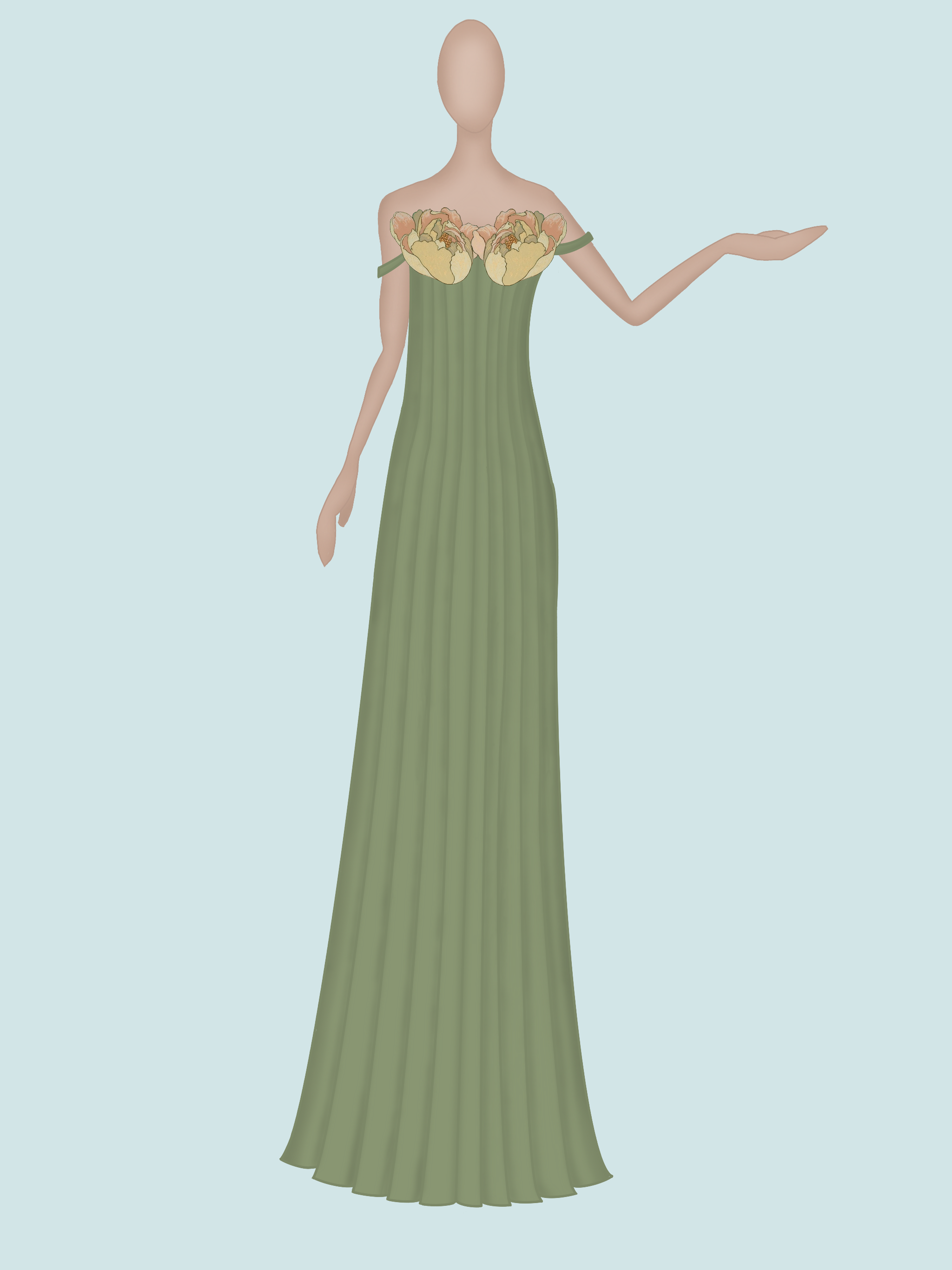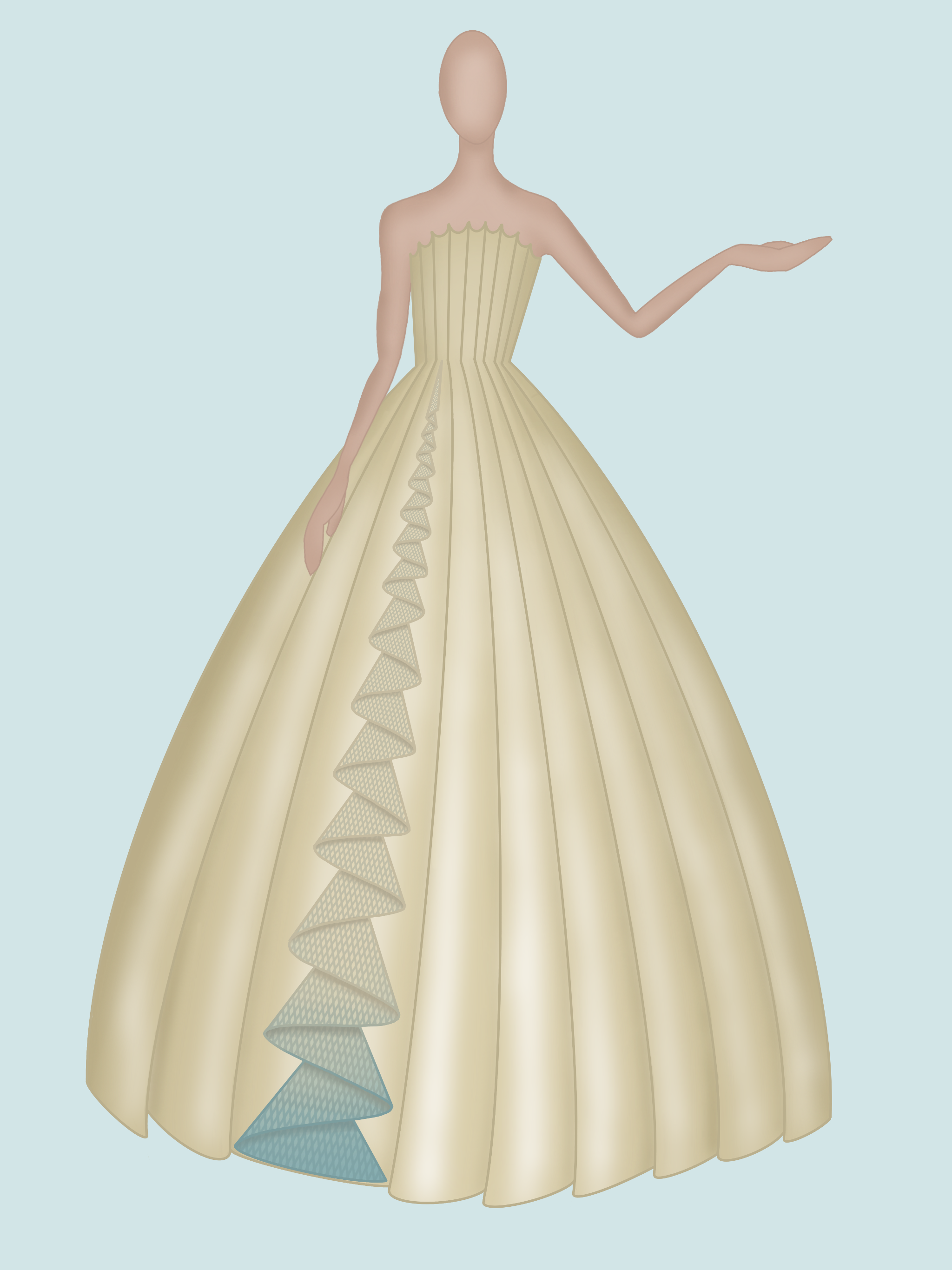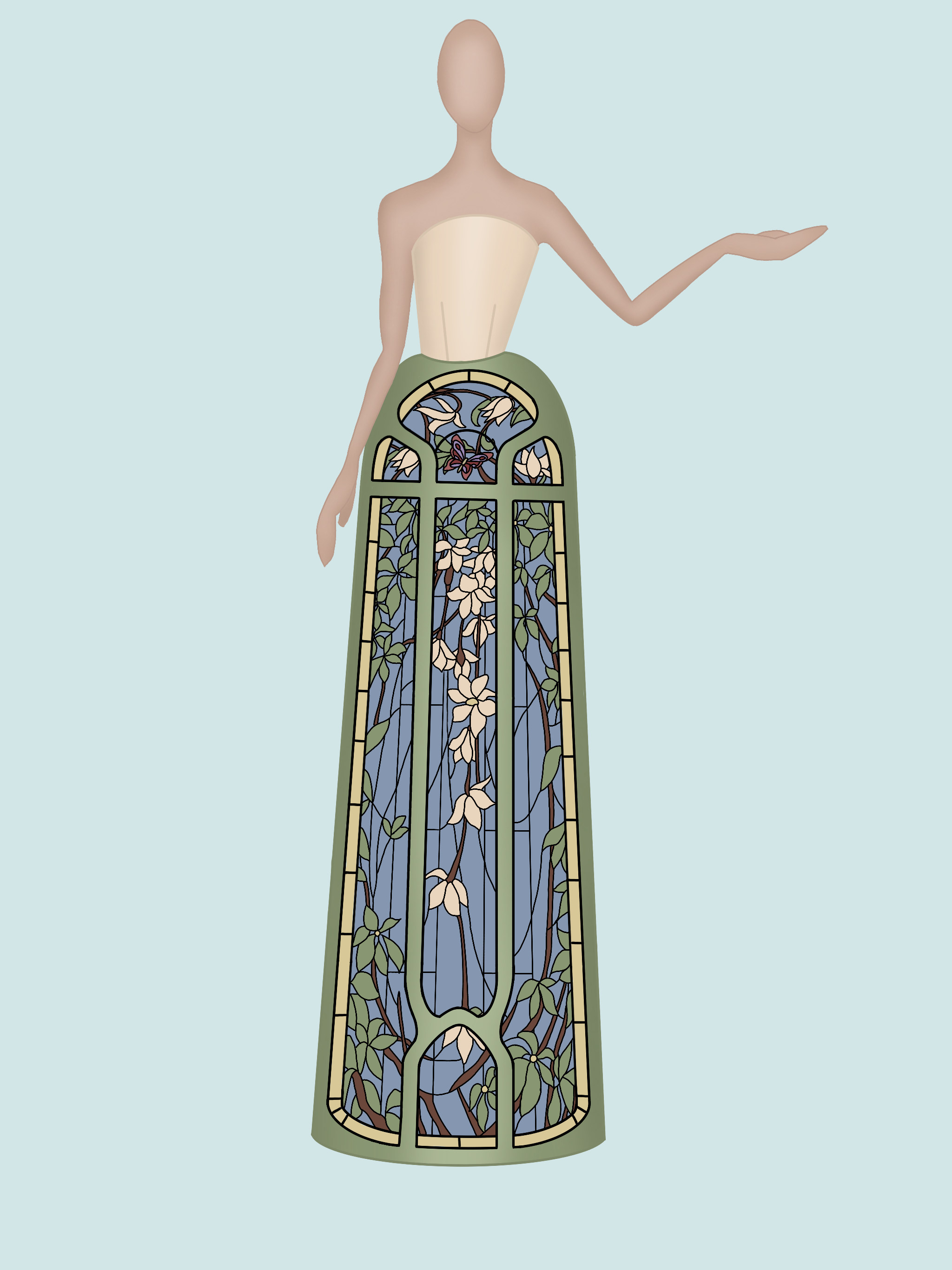Fine Art & Design
Venus nouveau
In The Next Room
In working on this project, I spent a great deal of my time researching the historical accuracy of every part of my designs, from the colors to the patterns to the silhouettes. Ruhl emphasized how important it was for these costumes to be accurate in every layer, and I wanted to give it my all. My sources ranged from The Met to blogs on historical costuming to sewing pattern websites to auction houses, each giving me a different angle to approach these designs. I learned a great deal about fashion trends in the Victorian era and their relationships to socioeconomic status and gender.
The Grace of Mary Traverse
Romeo and Juliet
For my designs of Romeo and Juliet, I decided to set it in the modern day with a Jewish Capulet family and a catholic Montague family. This certainly isn’t an original idea, with both the newsworthy canceled production in London with Romeo being a Nazi and Sondheim’s original plans for West Side Story. My main inspiration, however, was the closeness of Purim, a holiday with costumes and merriment, and Easter, a holiday about rising from the dead. I think it gives the audience some hope that maybe this interpretation will have a happy ending. Additionally, my parents were raised in two different religions, my father being raised Jewish by a Holocaust survivor mother, and my mother being raised catholic, but converting to marry my father. I think it’s a very romantic idea, loving someone so much that it becomes its own faith, in a sense.
top Girls
I decided to do costume designs for the first scene of Top Girls, the dinner scene. Making up about a third of the whole play, I felt that it was the most diverse set of costumes in the show, ranging from a ninth-century pope to a 1980s London career woman. It’s also my favorite scene in the play. This scene sets up the audience to watch Marlene’s life and the other women she interacts with in the modern day. It feels almost like a one-act play, dealing with feminism and how the patriarchy has affected all of these women.
Six Characters in Search of an Author
I really like the play Six Characters In Search Of An Author as it is both very relatable as an artist and a piece that can be adapted for the modern day. In my design choices, I based the family's designs on the 1910s and 1920s, as the play was written and first performed in 1921. While it can be tempting to make these characters as much of a blank canvas as possible as their story is unfinished and they’re unnamed, I wanted to challenge myself to create more detailed designs. I used the costume descriptions as a touching-off point but decided to make my own interpretation.
twelfth Night
For my costuming of Twelfth Night, I decided to set it after the Vietnam War in America. Twelfth Night as a post-war show isn’t my original idea, the production I was in this past summer here at Oberlin was costumed and directed as a post-WWII version, which inspired me. Another of my biggest inspirations was the movie Across the Universe, directed by Oberlin alum Julie Taymor. The late 1970s and early 1980s also saw a rise in androgynous mainstream styles, which fits with the themes of gender-bending in the play.
the Visit
Designing for The Visit, I decided to take inspiration from the 1950s, the Dust Bowl of the 1930s, Vaudeville, and circuses. In Claire Zachanassian’s world, everyone is merely performers doing her bidding, so it makes sense that the people she employs would be dressed like circus performers and sideshow acts.
Jane eyre
This class was my first time doing costume design and I absolutely fell in love. I did a lot of preliminary research and sketches, which I then redrew digitally. Since I was doing multiple designs per character, I decided not to color them as they were only rough draft designs. For this project, I also did a costume breakdown, set designs, lighting designs, and sound designs. I enjoyed exploring many facets of the design process, but costume design is still what I’m most passionate about.
















































































